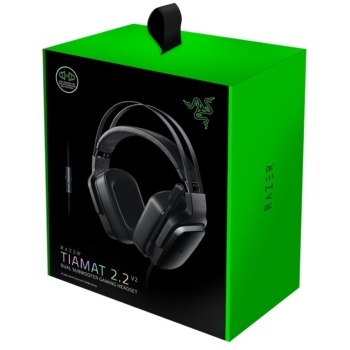

- Boom 3d vs razer surround drivers#
- Boom 3d vs razer surround driver#
- Boom 3d vs razer surround software#
With calibration, Razer effectively allows you to tune the virtual surround sound to ensure that it sound right no matter if you use a pair of Razer headphones or not.ĭuring the calibration process, the software will ask you to specify the pair of headphones you’re using. can all make a difference ultimately in how the sound is perceived. As virtual surround sound uses a combination of stuff like time delays and lowering of volumes, different headphone drivers, different earcup materials, different head shapes, different ear shapes, etc. The unique thing about Razer Surround is that Razer Surround gives you the option of calibrating headsets to make sure the virtual surround sound is working properly. This will then enable Razer Surround on the device and you’re good to go. By doing so, the Razer Surround software can intercept the audio and process it prior to it going back into your normal speaker device.Īfter making the Razer Surround speaker your default device, simply choose any of your speakers/headphones and click “ENABLE VIRTUAL AUDIO DEVICE”. In order to take advantage of the Razer Surround software, you’ll have to set the Razer Surround speaker device as the default device and route all audio through it. Upon installation of Razer Surround, you’ll notice that the software drops in a “fake” speaker device. Razer Surroundīefore we move on, let’s first take a tour around the software package. Of course, those who’d rather not waste time reading a review on some free software you can go ahead, download it and draw your own conclusions about the software instead. Now the Razer Surround software officially launches today, but Razer was able to give us a chance to play with the software a couple days in advance, so I’ll be giving you my impressions of it after a couple fun days of testing. This way you perceive the sound to be surround sound although the hardware itself isn’t capable of true surround sound. With virtual surround sound on the other hand, you use a standard stereo headset, but you also use complex calculations to calculate volume, time delay and bass boost to achieve the effect of something moving farther away, closer in, behind you, in front of you, etc.
Boom 3d vs razer surround drivers#
While this is usually the best way to achieve surround sound, it’s not very practical as these headsets tend to cost a lot of money, they’re quite heavy, and they use smaller drivers for each of the channels, so stuff recorded in stereo doesn’t tend to sound as good when compared to a stereo headset. In order to achieve true 7.1 surround sound, it would require a minimum of 4 drivers in each earcup – one for the front, center, rear, and subwoofer for each ear.

Boom 3d vs razer surround driver#
Since stereo headphones only have a single driver in each ear, it’s simply impossible to achieve true 7.1 surround sound without altering the hardware itself. Now, notice that it’s virtual 7.1 rather than true 7.1 surround sound. Today, Razer also introduced Razer Surround, which is an exciting new software package that Razer claims will offer virtual 7.1 surround sound to any pair of stereo headphones.

Generally when we hear about Razer, it’s about their gaming hardware, but recently they’ve been working hard on a number of new software packages that promises to help give gamers “the unfair advantage”.Ī couple months back, Razer launched Razer Comms, which is a communications software package designed to help improve communication while gaming.


 0 kommentar(er)
0 kommentar(er)
